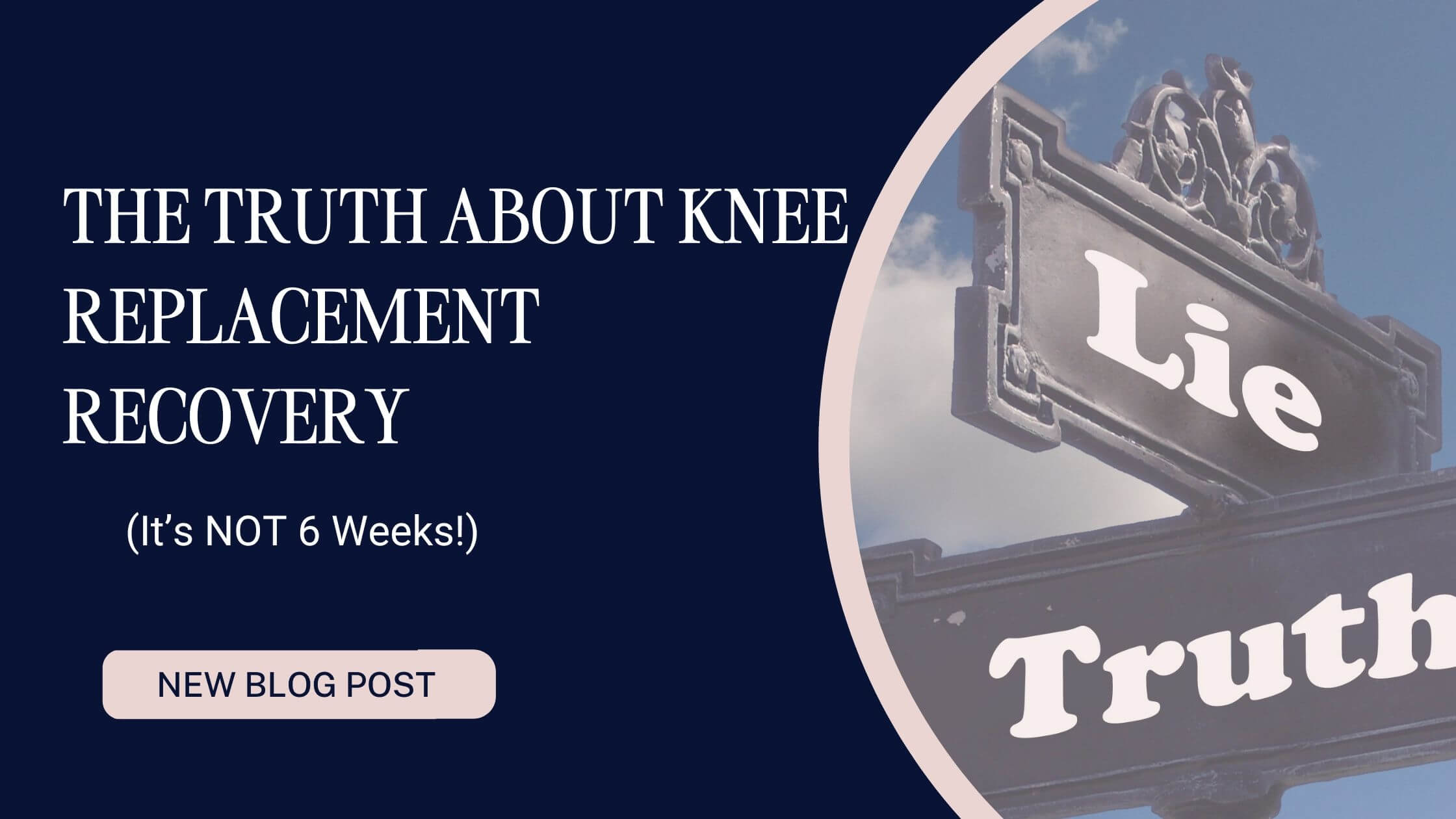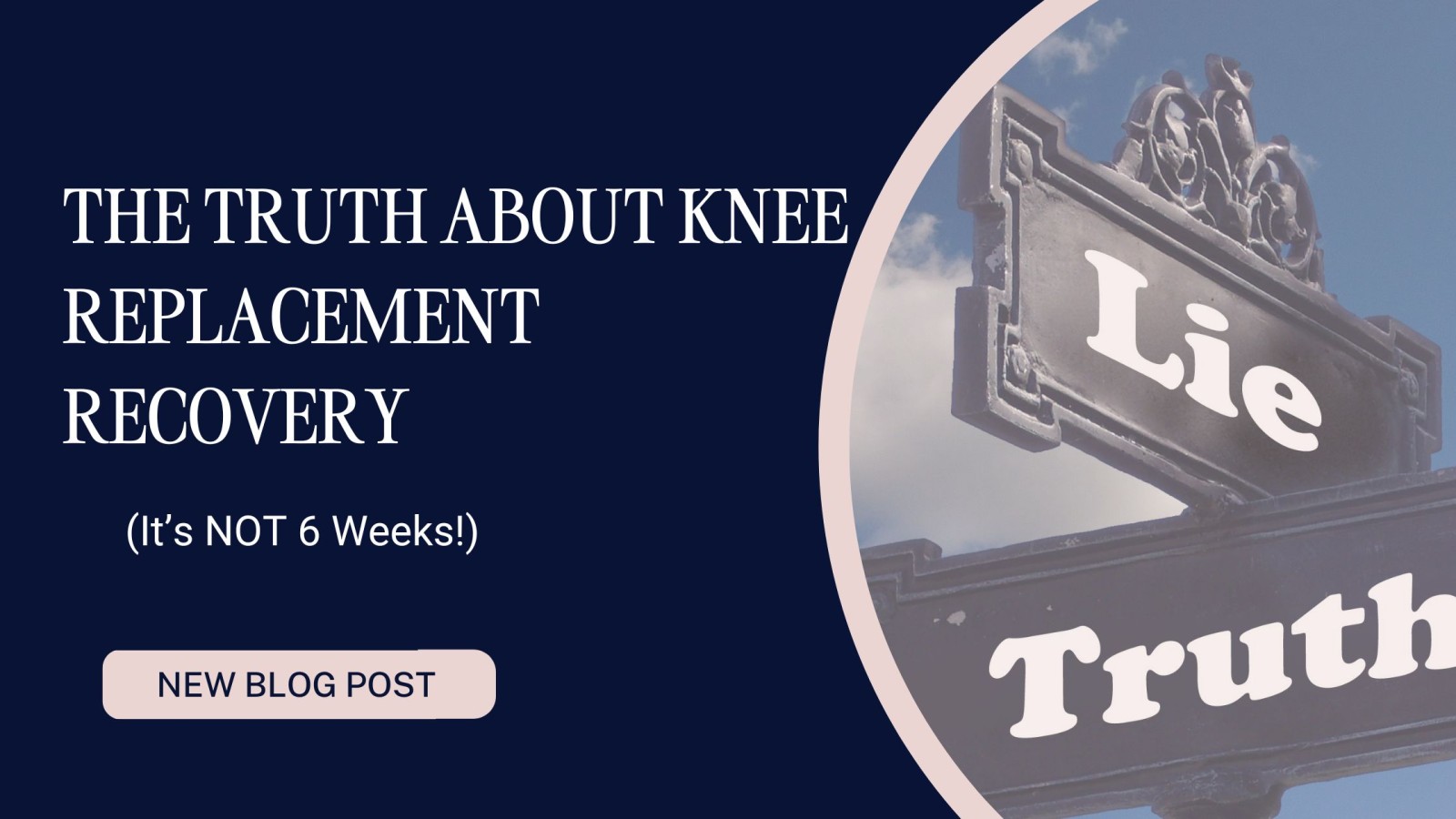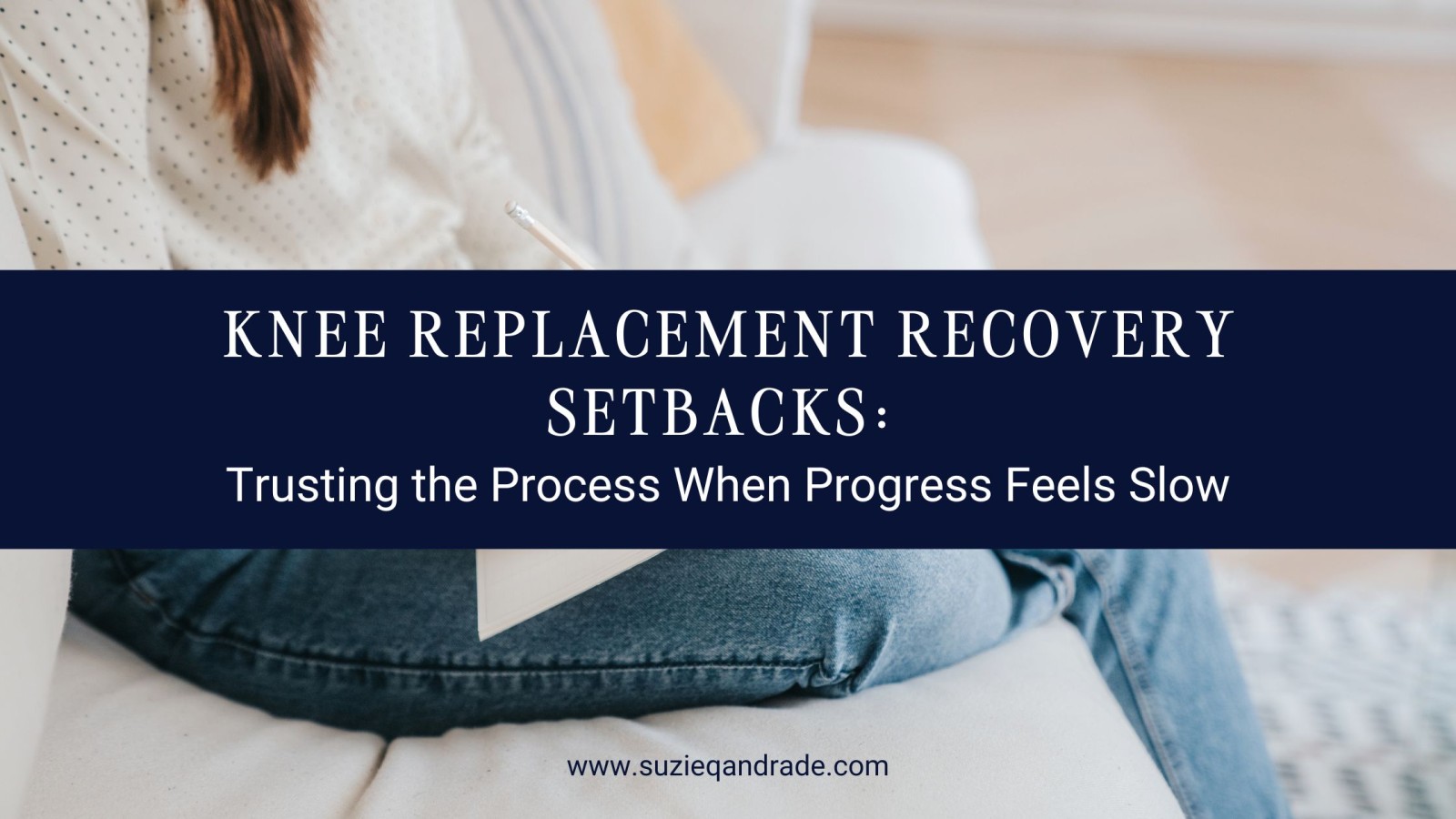 So you think you should be further along… maybe you’re not even six weeks out, or you’ve just hit that two-month mark, and you’re wondering why you still don’t feel “normal.”
So you think you should be further along… maybe you’re not even six weeks out, or you’ve just hit that two-month mark, and you’re wondering why you still don’t feel “normal.”Let me tell you something: you are not back to normal—or anywhere close to it—in six weeks.
And I say that as someone who’s been through not one, but two knee replacements and with all the love I can muster. When my surgeon told me, “I’ll see you in a year,” I swear it felt like the floor had been pulled out from under me. A year? I was thinking maybe three months tops.
But that’s the thing about recovery—it humbles you. It teaches you patience in ways you didn’t realize you were signing up for.
Before my first surgery, I clung to that number too. I thought, “Three months tops. I’m a go-getter. I’ll beat that.” Then week six came… and reality hit. I still didn’t feel strong enough to return to work and my stamina had not returned.
That was the moment I realized healing doesn’t follow a calendar—it follows your body. And once that clicked, everything about my recovery started to shift.
Where the “6-Week Myth” Comes From
This myth spreads fast. Doctors want to give you hope. Friends try to encourage you. And a few quick Google searches make recovery sound short and tidy (as do social media accounts).
But this one-size-fits-all promise sets so many people up for disappointment and doubt. When six weeks pass and you’re still stiff, sore, or limping, you start wondering, “What’s wrong with me?”
Here’s the truth: nothing is wrong with you.
The Real Recovery Timeline
At six weeks, I remember thinking, “OK—maybe this is just part of it. Maybe this really is major surgery.” It wasn’t defeat. It was more of a pivot.
I thought, “Alright, maybe I’m looking at four months instead of six weeks. I’ll just keep doing what I can and trust that I’ll get there.”
And that’s exactly what happened. Around the four-month mark, I finally felt a turning point. I didn’t feel ready to go back to work, but I knew it was time to start pushing myself again. My body wasn’t finished healing—but it was definitely changing.
Knee replacement recovery isn’t a sprint. It’s more like a marathon with surprise hills and detours. There are good days, hard days, and “who even planned this route?” days.
You might sleep terribly. You might feel amazing one day and wiped the next. That’s normal.
Most people start feeling more like themselves between 12 and 18 months. I know that sounds like forever, but the whole time, you’re still healing—even when it doesn’t look like it.
Healing is sneaky like that. The effort you put in everyday matters, even if you can’t see the results yet.
Why the Myth Hurts More Than It Helps
Believing you’ll be “normal” in six weeks can backfire in two ways:
- You push too hard, too soon—and end up with setbacks or new pain.
- You assume you’re failing—and start to lose hope.
Neither helps you heal. Recovery is not a competition. It’s your own timeline, your own pace, and your own story.
What to Believe Instead
Forget the myth. Healing isn’t linear. It’s layered, messy, and holy work all at once.
Listen to your body. Track how you feel. Adjust based on your energy. And focus on being just a little better than yesterday.
If you need a timeline, here’s one that always holds up:
God’s.
He’s got the plan. We just have to keep showing up, doing the work, and trusting that our bodies—and our faith—know how to heal.
You’re not behind. You’re rebuilding.
Want the full breakdown?
I dive deeper into each stage of recovery, the emotional ups and downs, and the mindset shifts that make healing smoother in my full YouTube video:
Because knowledge brings peace—and peace helps you heal. 🤍



















0 Comments